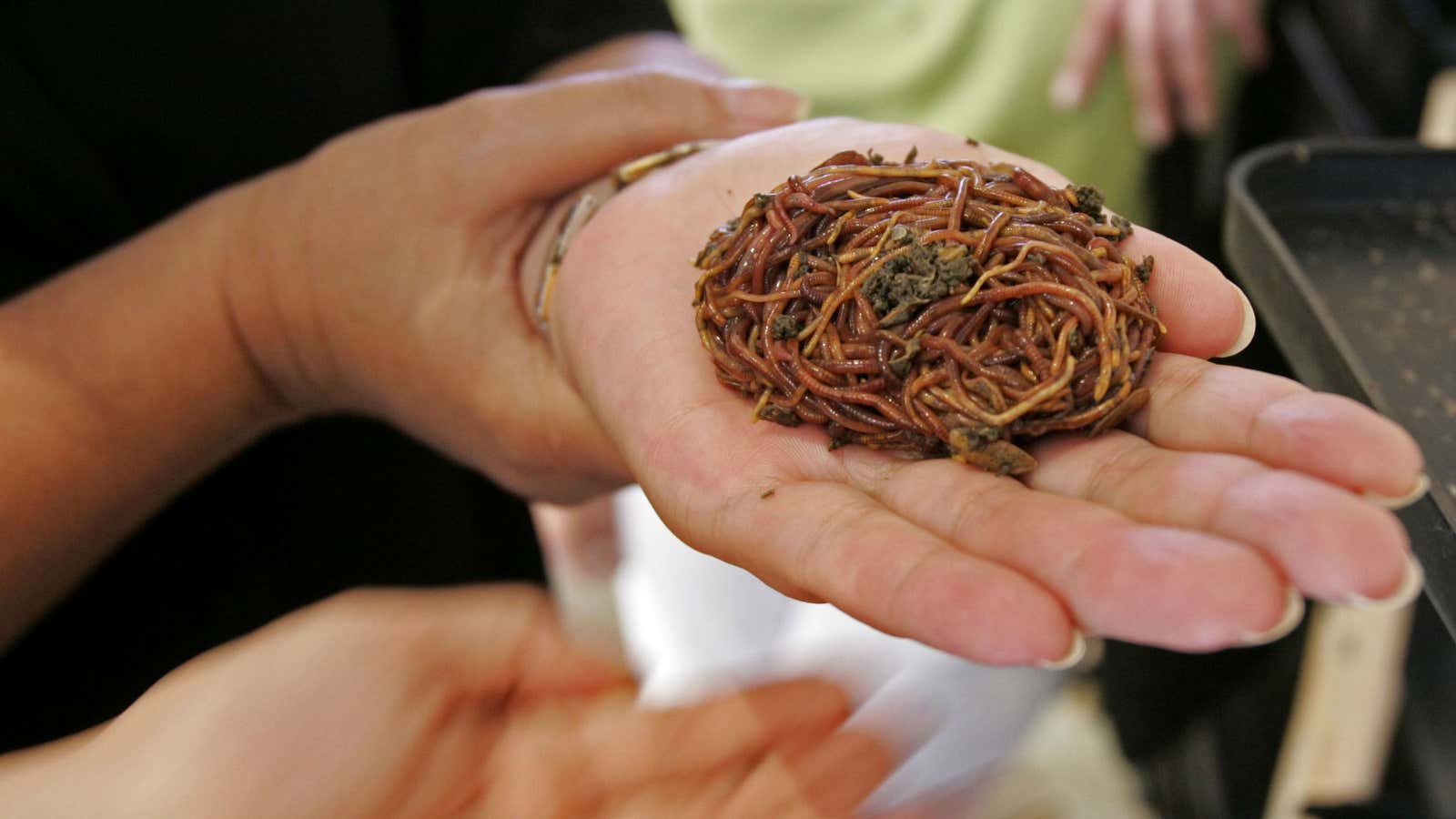If NASA, Space X, or any other organization wants to get people living on Mars, even briefly, in the next 15 years, they’re going to have to figure out how to grow plants there—Martian-style.
Martian soil isn’t exactly a plant paradise. It’s made mostly of hard, volcanic, basalt rock with a thick layer of iron-rich rust dust on top, peppered with bits of chlorine, potassium, sodium, and magnesium. Plants tend to prefer soils that are softer, containing billions of microbes, which are present here on Earth and not on Mars.
But scientists have discovered that plants are surprisingly able to make do, even in Mars-like soil environments. Using imitation Martian soil—dirt comprised of some of the same elements you would find on the red planet—scientists at the University of Wageningen in the Netherlands have been able to grow foods like tomatoes, radishes, and rye. They also separately attempted to grow arugula crops in the soil, and were surprised to find that not only did the bitter salad green grow, but earthworms seemed to thrive in it too, unexpectedly reproducing in the alien dirt.
Wieger Wamelink, a University of Wageningen biologist, has been working on growing plants in the soil, which they’ve called Mars 1A, since 2013. In a recent experiment, his team tested whether adding a swine poop slurry fertilizer and earthworms to this type of soil would improve crop growth. Fertilizer adds nutrients to the soil and earthworms take some of those nutrients and break them down further as they eat the dirt and excrete even more nutrients. They also dig tiny tunnels that allow water to reach roots more easily. On Mars, astronauts would have to make their own fertilizer (likely in the form of their own poop), and water for their crops.
“Clearly, the manure stimulated [plant] growth,” Wamelink said in a press statement. “However, the best surprise came at the end of the experiment when we found two young worms in the Mars soil simulant.”
That’s right: it appeared the worms didn’t just survive in the dusty, iron rich soil; they also got down to the wormy business of making wormy babies.
There’s still a long way to go before scientists can say Mars could actually support earthworms. This project is early research, hasn’t been published yet in a peer-reviewed journal, and currently is supported by crowdfunding.
One major caveat is that Mars 1A doesn’t contain perchlorates, which are a potent group of chemicals present in Martian soil that tend to kill off most of the life on Earth, including earthworms (paywall). Additionally, Mars is a heck of a lot colder than Earth, with a balmy average temperature of -81°F (-63°C). It also has a gravitational pull of less than half of what we (and worms) feel here on Earth. Presumably, even if scientists could rid the red planet of perchlorates, the frigid temperatures and weaker pull to the ground may not suit earthworm life.
Still, Wamelink is optimistic about the future of his work. He told National Geographic that he next plans to study fungi and bacteria in order to identify which species could make growing crops on Mars easier.
